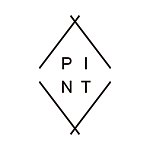The dyeing is the original indigo dyeing by the indigo dyeing craftsmen who have trained in the authentic Tokushima.
Indigo dyeing is done using the technique that has been used since the Edo period, which is called natural lye fermentation.
We make a dyeing solution with an indigo jar using a spider that fermented Tsubaki indigo and wheat malt, and stir it every day to promote fermentation.
Since it cannot be dyed without fermentation, it can only be dyed from spring to autumn.
The dyeing liquor, which is made entirely of natural plants, is managed daily by adding about 200 L of indigo pot to continue fermentation.
Mr. Saka, a craftsman, checks the condition by checking his eyes, smell, touch, and sometimes licking.
In a good sense, it is made of a mixture of various organic substances, and that is why the deep, beautiful colors that can only be achieved with this indigo dye come out.
Dip the cloth or product to be dyed in the indigo pot of this indigo, knead it, and let it blend well into the cloth.
The color does not enter in the indigo pot, but the color enters by touching air (oxygen) and oxidizing.
This is not the case with chemical dyes, so the color does not get as sharp as once, so this is repeated several times a day for 1-2 weeks. In this way, over time and time, the dye is layered and the colors are fixed.
Although it will be plain if you soak it as it is, the pattern is put in by a technique called squeezing.
When squeezing dyeing by immersing it in an indigo pot, fold the fabric, tie it, pass a needle, squeeze the fabric and change the shape to dye.
Depending on the shape of the cloth, it is divided into parts that do not contain dye and parts that do not.
A pattern that applies this is called a squeeze pattern.
Since there is no type, there are no clear color boundaries, and all are gradations.
The pattern of indigo color of infinite strength from white to dark blue is deep and really beautiful.
It is said that this indigo dye is not just an indigo color but a mixture of various colors such as red and green.
It is a cloth with a rich look that looks reddish, blackish, or purple when you actually see or shake it in sunlight.
It is said that plant dyeing also reflects vivid colors in order to perform diffuse reflection, but this area is the attraction of natural dyeing.
This pattern is not a squeezing pattern, but a wax-wax dyeing technique.
Apply a wax to a hard brush, then blow it onto a cloth and dye it.
Only the part with the wax does not have the color and becomes a pattern.
The star part of the pattern is the part with the wax.
[Material] Organic linen 100% natural lye fermentation
[Size] 45 × 45 cm It may be slightly different because it is dyed.
Product Description
Product Details
- Material
- Cotton & Hemp
- How It's Made
- Handmade
- Where It's Made
- Japan
- Stock
- Down to the last 3
- Popularity
-
- 4,710 views
- 2 sold
- 53 have saved this item
- Product Type
- Original Design
- Listing Summary
- This pattern is not a squeezing pattern, but a wax-wax dyeing technique. Apply a wax to a hard brush, then blow it onto a cloth and dye it. Only the part with the wax does not have the color and becomes a pattern. The star part of the pattern is the part with the wax.
Shipping Fees and More
- Shipping
- Payment method
-
- Credit/debit card payment
- Alipay
- Refunds & Exchanges
- Read more about refunds and exchanges
- Report
- Report this item






